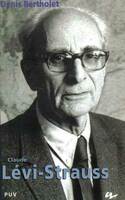- England
- Scotland
- France
- Holland
- Germany
- Italy
- Spain
- Portugal
- USA
- China
- Japan
- India
- Iran
- Advice
- Gardens
- England
- Scotland
- France
- Holland
- Germany
- Italy
- Spain
- Portugal
- USA
- China
- Japan
- India
- Iran
- Advice
- Garden Tours
Book: Landscape Planning and Environmental Impact Design: from EIA to EID
Chapter: Chapter 3 Context sensitive design theory
Linguistic aestheticism Linguistic philosophy provides an approach to exploring the semantic relationship between structures and contexts. Languages comprise words and grammar. They are abstract systems of signs connected by grammatical rules in order to carry meaning. The built environment can be regarded as a language which uses buildings, instead of words, to convey meaning. It therefore needs grammatical rules. When looking at the landscape, it is possible to identify signs which convey meaning [Fig 3.14]. Rocks, soils, vegetation and other surface features inform us about underlying geological structures, such as bedding planes and fault lines. This fact was used by the linguistic anthropologist, Claude Levi-Strauss, as an analogy to make a point about language. He argued that language is a surface code which informs us about the deep structures of human society [Fig 3.15]. The ways in which twentieth century architects have used linguistic ideas have been chronicled with admirable wit and skill by Charles Jencks. In The language of post-modern architecture he sees double-coding as the defining characteristic of post-modern architecture. The first code deals with function, as when building features tell us 'way in', 'way up', or 'head office '. The second code is legible only to those with expert knowledge, as when a building refers to a classical predecessor, a famous architect, another building, or an aspect of the locality. Linguistic analogies have helped architects to reforge the links between architecture, meanings and contexts. Others have treated the subject as a reverse cargo cult, hoping that the adornment of buildings with linguistic jargon would attract shiploads of new commissions from the South Seas . It is hard to translate the meaning of a building into words without over-simplification. A tall building with a pointed roof in a central location expresses lofty intentions, as churches did in medieval, renaissance and Victorian cities. Financial centres have taken on this role in modern cities. London 's Natwest Tower , just visible on the cover of this book, has replaced St Paul 's Cathedral as the tallest building in the old City of London . Prince Charles, with obvious nostalgia for an era when churches and monarchs had greater status, has lobbied for planners to protect the position of St Paul 's in London 's skyline. The use of reflective glass on a building speaks of a desire to see without being seen. A garden wall says 'the land beyond this point is private property'. A neat path informs the pedestrian: 'use this route to enter the building; do not walk on the grass'. An imposing gateway can be used to say 'important people come here' [Fig 3.16]. Making a building stand out from its neighbours carries a different meaning from a decision to make a building resemble its neighbours. Such messages, coded in the language of architecture, are welcome. The linguistic analogy, despite some eccentricities, can provide a partial basis for a theory of context. But it is the language of the environment which should concern us, not merely the language of architecture. Roads, reservoirs and forests, like buildings, can refer to a great range of contextual factors: local climate, local materials, the structure of a town, the structure of a habitat. Each development can enter into a dialogue with its context. As in any dialogue, there will be a mix of old truths restated, confusions, sharp contradictions, platitudes, enlightened commentary and inspired thinking. It is plain bad manners for a development to disregard its context, as was the norm for modernist developments. Being in a modern city is like being in a room surrounded by people shouting meaningless words at one another. Journalists call it a concrete jungle. One can easily get lost and one never knows when a screeching noise presages a blow from an attacker, a gust of wind or the passing of a dangerous vehicle. A grey building might turn out to be a national library, a shelter for the homeless or an academy for the secret police. Surely it would be better if one could read buildings' functions from their exteriors. A linguistic approach to architectural design would probably lend support to the Australian's proposal for a stainless steel church, partly on grounds of cultural pluralism and partly because the durability of steel proclaims the eternity of faith. The Eucalyptus forest might be approved, on pluralistic grounds, as having a multi-faith message which demands tolerance.
